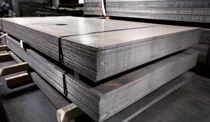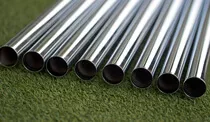Stainless steel is one of the most widely used metals for construction materials. Due to its strength, versatility, and recyclability, stainless steel is the go-to metal choice for a variety of projects including architecture, landscaping, interior construction, and engineering.
In this article, we’ll discuss what stainless steel is used for, what it’s made of, types of stainless steel (focusing on the 300 and 400-grade series), and the many cost benefits when choosing your construction materials.
WHAT IS STAINLESS STEEL USED FOR?
Stainless steel is used in hundreds of industries including domestic, architectural, transport, medical, food and drink, and pharmaceutical. Its durability and strength make it ideal for everything from surgical instruments to industrial piping.
There are few industries where you won’t find stainless steel, and it is by far the most popular non-magnetic material option in commercial construction.

WHAT IS STAINLESS STEEL MADE OF?
Stainless steel is a low-carbon steel alloy containing an average of 18% chromium along with varying amounts of silicon and manganese. Chromium gives the steel its durability by hardening and increasing its corrosion resistance in high-heat or oxygenated environments. In some grades, nickel and molybdenum are also present to further increase corrosion resistance.
WHAT ARE THE TYPES OF STAINLESS STEEL?
Stainless steel is divided into five primary categories — all of which come in a variety of grades. The most popular are the 300 and 400 series. The five basic types of stainless steel are:
- Ferritic: Chromium-based with less than 0.10% carbon. Limited in use.
- Austenitic: The most common type of stainless steel with the addition of nickel, manganese, and nitrogen to increase weldability and formability.
- Martensitic: Similar to ferritic, but with a higher carbon concentration. It has high strength but lacks the corrosion resistance of austenitic steel.
- Duplex: Approximately 50% ferritic and 50% austenitic. It's known for its high strength and resistance but is fragile during welding.
- Precipitation Hardening (PH): Comparable to austenitic steels given extremely high strength, with the additions of copper, niobium, and aluminum over an ‘aging’ heat treatment.
THE 300 SERIES
The 300 series is made of austenitic steel and offers versatility, corrosion resistance, strength, and extreme temperature resistance.
The most popular grade of the 300 series is Grade 304. Grade 304 is also known as 18/8 due to its composition of 18% chromium and 8% nickel. In addition to the standard benefits of austenitic steel, Grade 304 also showcases recyclability, long life, aesthetic appeal, substantial hygiene, and low maintenance. It also has a low-carbon version known as 304L.
Common uses of Grade 304 include refrigerators, dishwashers, and food processing equipment. It’s also found in chemical containers, heat transfer plates, and construction tools.
THE 400 SERIES
The 400 series is made of ferritic and martensitic stainless steel, with the additions of carbon, chromium, and manganese. It also boasts high strength and wear resistance.
The most popular grade of the 400 series is Grade 410. Grade 410 contains 11.5% chromium which makes it extremely strong following heat treatment. This grade is also magnetic when hardened, making it suitable for certain jobs the 300 series cannot do. Grade 410 also tends to be cheaper than Grade 304 due to its low alloy content.
Grade 410 is primarily used in the automobile industry and in part making for refineries and gas and steam components.



























